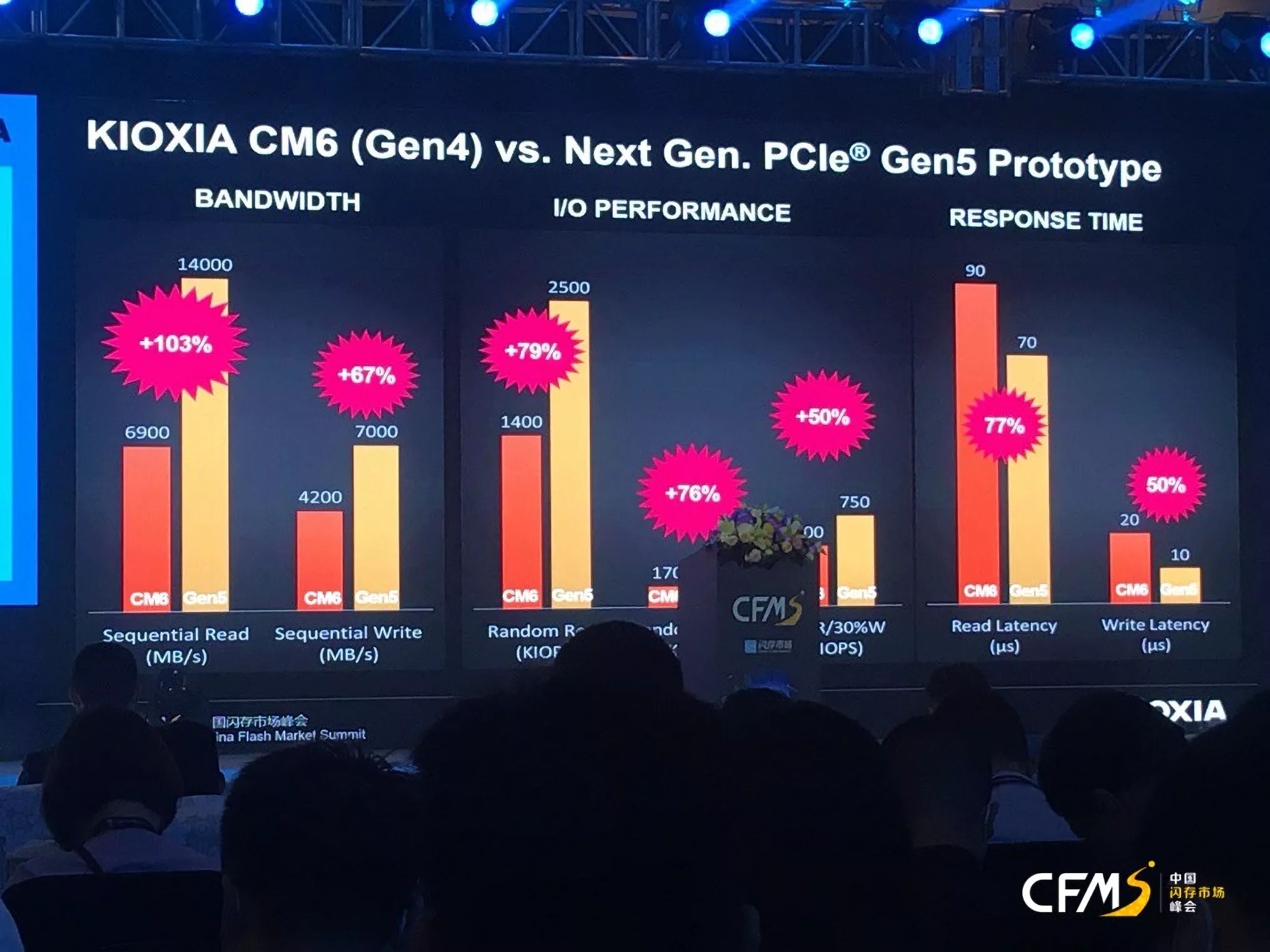Kioxia explained that it achieved that speed with its BiCS Flash 3D NAND layering technology, built in collaboration with WD and is also in its 6th generation. Specs-wise, the 6th generation BiCS Flash houses 162 layers across a die lithography that is 40% smaller than its 112-layer BiCS. Despite the shrink in size, Kioxia claims that its new NAND cells allow for up to 66% faster average write speeds. The company also explained that in order to achieve those higher speeds, it had to develop a 16-channel SSD control that will make its debut in its upcoming 5th generation CM6 and CD7 SSDs. The end result from its endeavours is an SSD that is capable of reaching 14000MB/s sequential read speeds and sequential write speeds of 7000MB/s.
Again, it should be noted that, at the time of writing, Kioxia’s PCIe 5.0 is still a prototype and there is still no indication when a proper consumer-ready version of the SSD will be officially available. (Source: Techspot, Hot Hardware, Videocardz)
